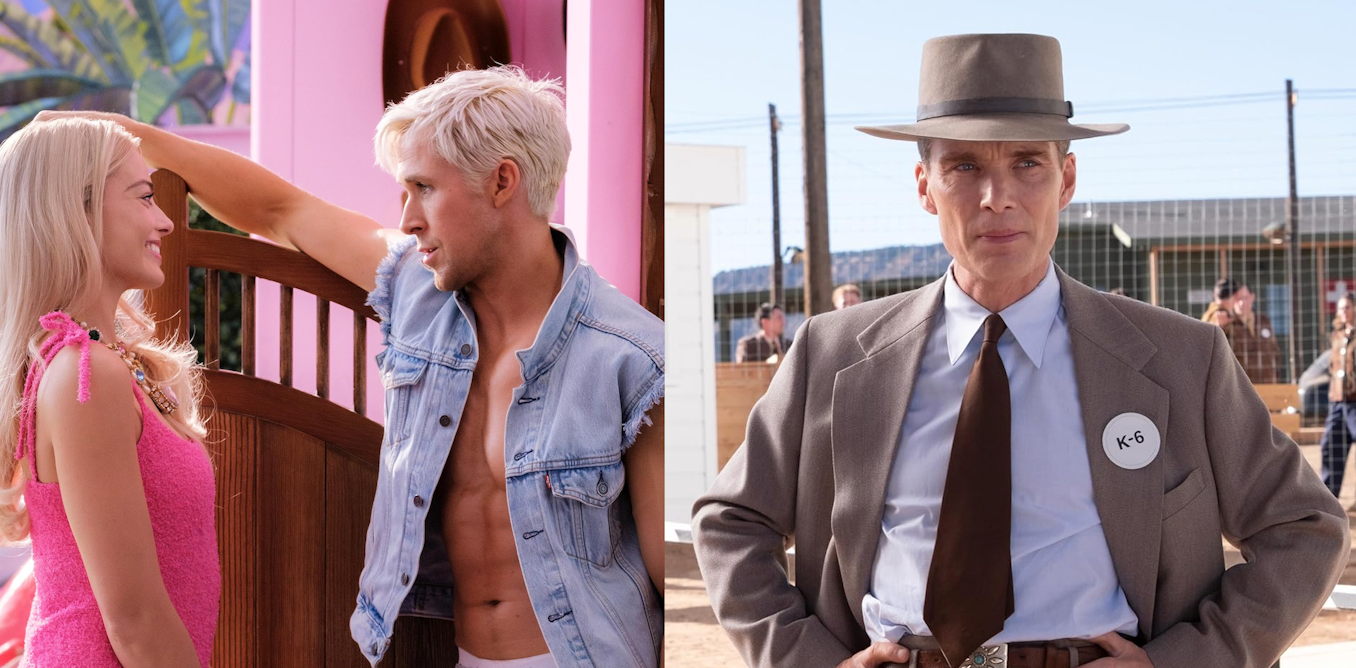There are many factors that determine the Oscar winners and nominees each year. Seldom does the actual “best picture” win the award, and often the year’s best films fail to be recognised at all. Perhaps they’re not topical enough, not American enough, or not moral enough.
It’s hard to argue, for example, that Robert Zemeckis’ pleasant but forgettable yarn Forrest Gump was the best film of 1994, when Quentin Tarantino’s landscape-changing masterpiece, Pulp Fiction, came out the same year.
Nonetheless, the Oscars have until recently always celebrated Movies with a capital M: motion pictures made to be seen, first and foremost, in cinemas. These productions have almost always demonstrated incredible technical accomplishment, even if their narratives have been irritating or unnotable. Forrest Gump may be sentimental schmaltz of the most ludicrous kind, but at least it’s cinematic.
This year’s picks include some good, if not great, films. But they also reflect what most cinephiles already know: streaming is the last nail in the coffin in the shift away from cinema to television. The only nominees that feel like pieces of cinema (that is, movies committed to the cinematic form) are Oppenheimer and The Holdovers.
Equally rare for the Oscars, only a couple of nominees stick out as truly awful.
The good
Killers of the Flower Moon
Though director Martin Scorsese’s Killers of the Flower Moon is overlong, its true story is riveting, a family crime odyssey in the tradition of James Foley’s exceptional neo-noir At Close Range.
The narrative follows the murderous attempts of a clan led by William King Hale (Robert De Niro) to rip off a family of Osage Indians who became extremely wealthy after oil was discovered on their reservation. The murders are so cruel and unjust that, in effective crime film fashion, we root for the federal police when they appear in the final third to bring the villains to order.
It’s a low-key affair, featuring excellent performances from all the main actors, including Scorsese’s current muse, Leonardo Di Caprio, his old muse, De Niro, and a newcomer to films of this scale, Lily Gladstone.
Despite this, it feels more like a television series than a movie made for cinema. This makes sense – it’s produced by Apple, and therefore designed to be watched on the small screen.
Anatomy of a Fall
The French production Anatomy of a Fall similarly works very well as a crime film. This courtroom drama follows the trial of novelist Sandra Voyter (Sandra Hüller), a powerful and uncompromising artist and mother, for the murder (or was it suicide?) of her pathetic and self-loathing husband, Samuel (Samuel Theiss).
The narrative is extremely well-drawn by director Justine Triet. The film moves skilfully between the present of the trial and re-enactments from the lead-up to the supposed murder, keeping the viewer guessing “whodunit?” beyond the final image.
The writing is razor-sharp, with precision in detail and authenticity in the dramatisation of the manipulative actions of the characters. At the same time, the film effectively negotiates one of the great problems of the 21st century: how do we justly navigate (and assess) the relationship between our public and private lives?
At the end of the day, however, Anatomy of a Fall is like an excellent episode of a good crime show. It’s formally uninteresting, and even ugly in places (with digital video artefacts present in the wide shots of the snowy environment).
What is the role of the mother? At the heart of Anatomy of a Fall is a critique of anti-feminist backlash
The Zone of Interest
British director Jonathan Glazer has made only a few films throughout his career, and The Zone of Interest is probably the best of them.
It follows the petit-bourgeois lives of a German family living in Poland as they go about their daily life. The mum, Hedwig (Sandra Hüller), works meticulously on the garden. The dad, Rudolf (Christian Friedel), is an animal lover who rides his horse, walks his dog and tries to educate his children while keeping things together at work. The children in turn play together and torture each other, as children do.
The twist? The father is Höss, commandant of Auschwitz, and their house is next door to the camp. Underlying everything is a progressively menacing understanding of the horrors happening next door, through which the aspirations of this bourgeois family are founded.
The film embraces an ugly video-aesthetic (much like Austrian filmmaker Michael Haneke whose work is surely in the back of Glazer’s mind). Cold, detached images are captured by a mostly immobile camera. At times it feels like an observational documentary and (echoing Hannah Arendt’s famous statement about the banality of evil) this is clearly the point: ordinary life transpires for this family while, behind them, the chimneys pulse with fire and spew black smoke into the pristine air.
The nightmarish, surreal sequences that punctuate the film, matched by unsettling music and sound design, come to a climax in a stunning ending. Höss looks in horror towards the future, and the film punctures our own interest in these characters by confronting us with contemporary images from the Auschwitz museum. We see the collected shoes, for instance, from the bodies that became ash and fertilised Hedwig’s pretty garden.
In many respects, this is the most interesting of the nominees, but it also feels more like a video than a Movie.
American Fiction
The directorial debut of writer Cord Jefferson stars Jeffrey Wright (in career-best form) as novelist Thelonius “Monk” Ellison who decides to write a “black” novel when his publisher rejects his latest idea, a retelling of Aeschylus’ The Persians.
The book he writes – Fuck – is ludicrous, capitalising on white liberal sensibilities regarding what literature written by African Americans should be about (it features eye-patch-wearing, gun-touting criminals from the ’hood). It also (predictably) becomes a smash hit, with the movie rights sold almost immediately to a brash producer for $4 million.
This playing out of identity politics is interspersed with gentle drama involving Monk’s real life – a mother suffering from dementia, a sister who dies too young and a brother coming to terms with his sexuality. The material about the novel is funny, but the film’s brilliance lies in its counterpointing of the ordinary but complex stresses of middle-class life with the supposed problems of black people.
American Fiction is a sweet film, the most fun of this year’s nominees. But, as with much else on the list, it feels like it has been made – by Amazon – to be watched on television.
The average
Past Lives and Poor Things
People claimed Past Lives was the most beautiful film of the year. But I found its cross-continental and cross-temporal romance a touch trite. Celine Song’s debut feature certainly looks very nice, and the performances are all pitch perfect, but it struck me as underwhelming and uninteresting.
The same can’t be said of Yorgos Lanthimos’s Poor Things, which strained at every point to be overwhelming and formally interesting. But like a lot of artworks that try this hard, it falls flat. It comes off as a weaker, more pretentious imitation of Lanthimos’ better, earlier films. The first half hour is like something made by a student who worships Lanthimos and has unlimited resources.
That said, things pick up once the main character, Bella (Emma Stone), goes overseas to connect with her libido, leaving behind her Frankenstein-like creator, the scarred and affable Godwin (Willem Dafoe). What we’re left with is a mildly diverting romp over the seas and through the brothels of Paris.
The awful
Maestro
Conductor and composer Leonard Bernstein may have been a critical figure in 20th-century American music, and a larger-than-life character in American cultural life, but it would be hard to imagine a more self-indulgent project than Maestro from director-star Bradley Cooper.
Produced by Steven Spielberg (who has a knack for picking dull but profitable projects as a producer), there’s absolutely no drama or tension in this story. As good as Carey Mulligan is as wife Felicia Montealegre, Cooper is awful in his caricaturish imitation of Bernstein.
This is the first best-picture nominee I can think of that genuinely feels like it has been written and made by AI. Reminiscent of a slick pamphlet produced by a PR agency, this biopic demonstrates about as much colour as a Wikipedia entry. It’s astonishing anybody could consider it best-picture-worthy, and its presence in the category surely says more about Oscars politics than anything about its merits as a film.
Barbie
Maestro is joined at the bottom of the pool by the equally abysmal Barbie. The central conceit of co-writer-director Greta Gerwig’s film is fine: Barbie discovers she’s a doll, sets off for the real world, and sets about dismantling the patriarchy (does she though?). But the film repeats the same point over and over for an agonising two hours.
Indeed, the whole thing feels more like a series of short videos made for social media (some of which are funny on their own terms), strung together in a haphazard order, than a feature film. The Ken character, well-played by Ryan Gosling, is the real star, the only character with any pathos (once again this supposedly “feminist” film is made for and fetishises men).
All the female characters are seemingly mired in a world of hackneyed Instagrammatic cliches about motherhood and being “woman”, as though this category exists outside of specific, embodied experience. Maybe it’s meant to be a mess, but a good film this does not make.
The best picture?
Of the best-picture nominees, only two played like movies to be seen at the cinema.
Oppenheimer
There’s a lot to dislike about Christopher Nolan’s Oppenheimer. It’s too long, it’s pretentious and it seems to think it’s marking some kind of significant discussion of a fascinating moment in American military history (in other words, American history). As a serious biopic it’s not terribly effective. But as a tactile romp it’s delightful.
It’s fun watching all the brilliant actors trying to look and act like real-life people – Robert Downey junior is a hoot as always – and there’s something perfectly hypnotic about the film’s combination of image and sound. Oppenheimer is an immersive, viscerally charged film that’s willing to experiment with form, and it is formally stunning. And like that stinker Forrest Gump, it as least warrants being seen on the big screen.
The Holdovers
Because it’s better than Oppenheimer, my pick for best picture is The Holdovers. Filmmakers shooting on video (that’s almost every filmmaker now, although Nolan notably still shoots on film) often employ a panoply of tricks to try to make their images look more like film (with greater dynamic range, richer colour, visually appealing texture and so on).
Director Alexander Payne, cinematographer Eigil Bryld and colourist Joe Gawler actually pull this off in The Holdovers. The film looks like it has been shot on film stock, perfectly capturing the brown tones of an elite boys’ boarding school in America in the 1970s. And it in no way suffers from being viewed on a big screen, unlike, for example, Anatomy of a Fall.
The coming-of-age narrative follows grouchy ancient-history master Paul Hunham (Paul Giamatti) as he’s forced to stay at school over the Christmas break to oversee the “holdovers”, the boys whose parents don’t want or can’t have them home for the holiday. The material is formulaic – think Mr Chips crossed with Dead Poet’s Society crossed with The Catcher in the Rye – yet every element is so beautifully rendered, it’s a true pleasure to watch.
Giamatti is perfect in a role he was born to play, as the crotchety, pompous and physically repellent miser loathed by students and staff alike. Newcomer Dominic Sessa is remarkably self-assured as Angus Tully, the troubled boy for whom Hunham develops a genuine fondness, and Da’Vine Joy Randolph is also excellent as bereaved cook Mary Lamb.
Despite being replete with cliches, the stock characters and narrative are handled so expertly by Payne, and the actors are so good, that The Holdovers simply works – even if it’s sentimental to boot. It’s the kind of old-style film we don’t see often in an era of pontificating online moralism and disposable, interchangeable streaming “product”.
It’s also an effective cinematic work in a contest where most entries don’t feel like they were made for cinema. But was it the best film released in 2023? Come on!
The promised big hits, sure disappointments, and hidden indie gems we’ll get from Hollywood in 2024




